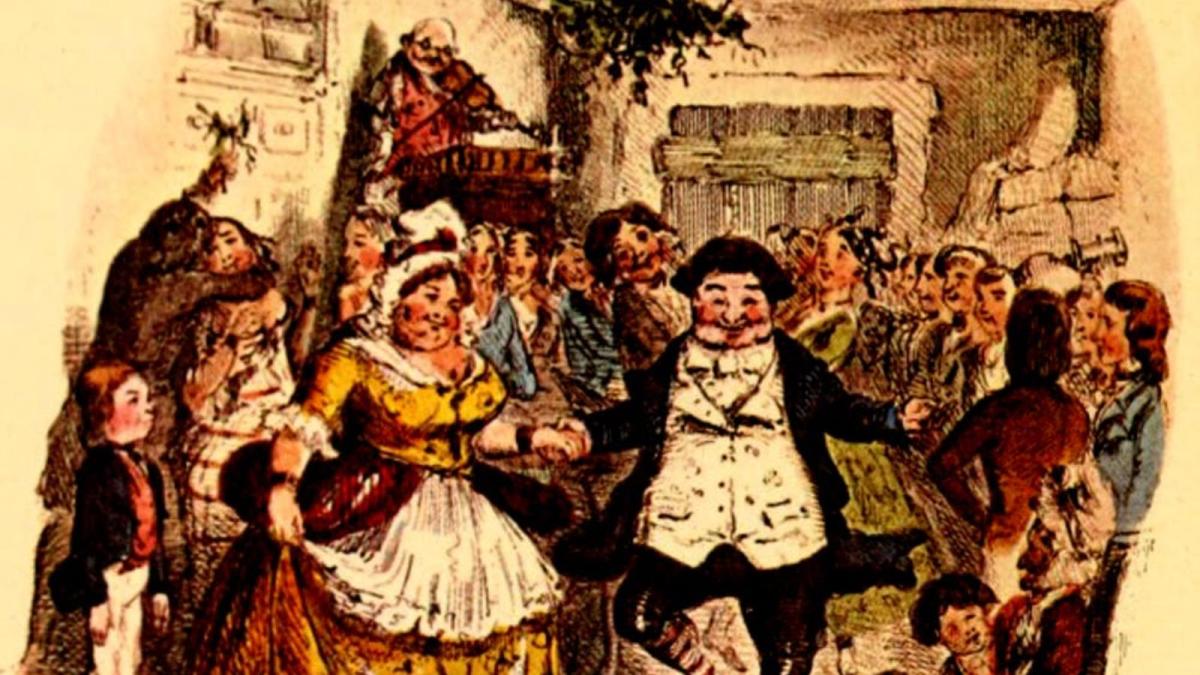At this time of each year, celebrations take place in various parts of the world, especially in Europe and the Western world, on the occasion of Christmas and the New Year, and a large number of people enjoy new dresses, ornaments, and dazzling decorations for the Christmas tree.
But in many cultures in the northern hemisphere, the winter solstice around the time of the holidays caused great fears, and for centuries, societies across Europe were mainly rural and at the mercy of nature, so it's not surprising that people felt ruled by supernatural forces. for nature.
For example, many Europeans in the Middle Ages believed that this was the time when ghosts, goblins, and terrifying mythical beings roamed the earth.
Ghosts and goblins
In Iceland at this time of the year, when daylight lasts from 4 to 5 hours, medieval Icelanders believed that this was the perfect time for ghosts and terrifying goblins to appear, and one of the Icelandic epics called "Eyrbyggja" includes the story of a farmer who invited his neighbors to a feast Christmas, just to escape from the company of ghosts, and advise them to shake off the mud from their clothes and sprinkle it on the ghosts in the house so that they do not get sick.
According to what the newspaper "The Guardian" reported in a recent report.
Then there is the legendary goblin named Nisse of southern Sweden, Norway and Denmark.
Farmers often put bowls of rice porridge on their doorsteps to pacify these short, white-bearded imps.
If treated well, they protect the family and animals from evil and misery, but if they are offended, they will steal homes and crops, killing animals and maiming farmers and residents.
In 1812, writer Washington Irving invented the idea of St. Nicholas shaking the chimney, but before that, spirits visited home hearths, and the Norse god Odin would often enter a home through the chimney at the winter solstice.
In England, the population used to pierce the heart of a huge bull with nails and thorns and then hang it inside the chimney in order to punish witches.
As for "Krampus", he is a terrifying figure from Austro-Bavarian folklore, with brown or black hair, cloven hooves and hard goat horns. His name is believed to be derived from the German word "Krampen", which means "claw", And he always carried branches of birch wood to beat naughty children and eat them or take them to Hell.
Christmas decorations scattered around the world (the island)
dark origins
Some stories, tales and popular traditions that are celebrated during the festive period have real dark origins, indicating the extent of brutality, poverty, hunger and superstition that prevailed in various parts of Europe. For example, in the 18th century, religious hymnists would storm homes and break down doors in search of food and drink.
Writer and historian Thomas Christensen recounted, in an essay, how 17th-century carolers would arrive at homes unannounced and demand the finest food and drink from residents, often with violence and rape, destroying property, and singing songs with words such as “Here we come.” To claim our right, and if you don't open your door, we will put it on the ground."
The Tale of the Good King Wenceslas is a famous Christmas carol sung in various Christian churches about a kind king who helps a poor peasant in a blizzard, however, most people don't know that the inspiration for the song (the good king) was a real person who died horribly.
Wenceslaus I, Duke of Bohemia (present-day Czech Republic) was born in 907 AD, after the death of his father, Vratislaus I, and was raised by his mother, Drahomira, who was the daughter of a pagan tribal leader.
In September 935, Wenceslaus was killed on the orders of his power-hungry brother, stabbed repeatedly with a spear while praying in the church, and then his body was dragged out and literally dismembered with cleavers in front of the church, according to the Insider platform. in a recent report.
Myths have always been a part of human history that often have their true roots (the island)
In fact, Christmas was not always celebrated on December 25 each year, as the date of Christ's birth was only officially set after more than 300 years by Pope Julius I.
Before that, Jesus was born on at least 3 different dates: March 29, January 6, and sometime in June.
But the date of December 25 was agreed upon because it coincided with the date of an ancient Roman pagan festival called "Saturnalia" - Saturn's Day - according to Encyclopedia Britannica.
This ancient festival included "unrestricted drinking" and a change of roles between slaves and their masters, as slaves were given temporary freedom to do whatever they liked during the holiday period, schools were closed, criminals were allowed to spread, as well as encouraging the rich to give gifts to the poor to avoid theft, in addition to Holding banquets, exchanging visits, decorating homes, and other festive aspects, many of which we see now in Christmas celebrations.
These myths have always been part of human history that often have their true roots, and many holidays have pagan origins, according to Will Durant, author of The Story of Civilization: “We must remember that history What we write is very different from the history we live."

